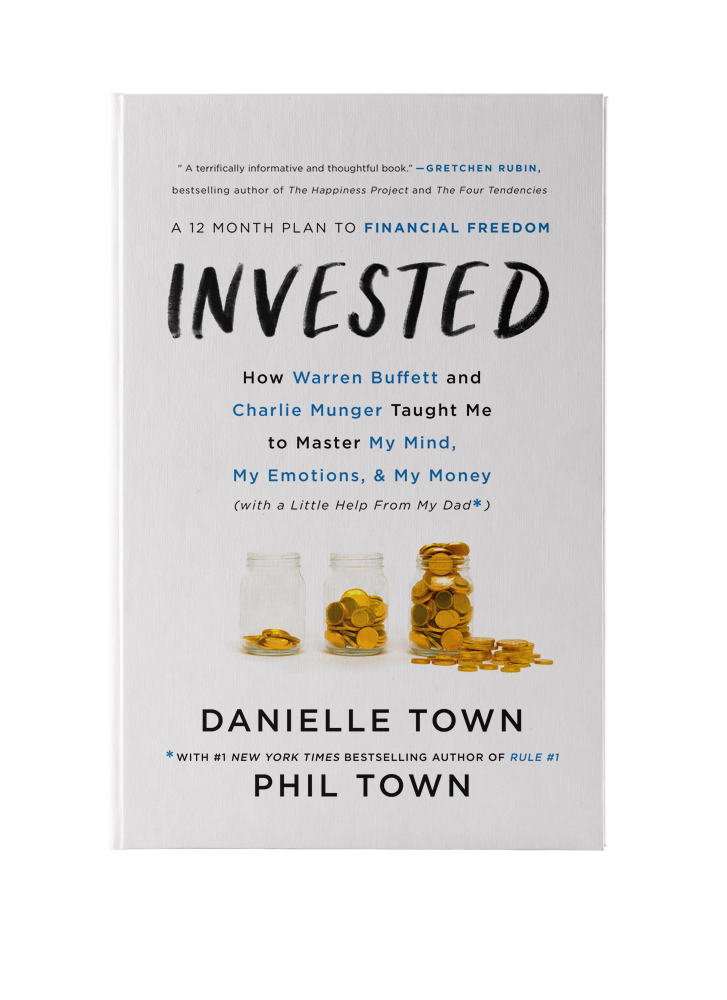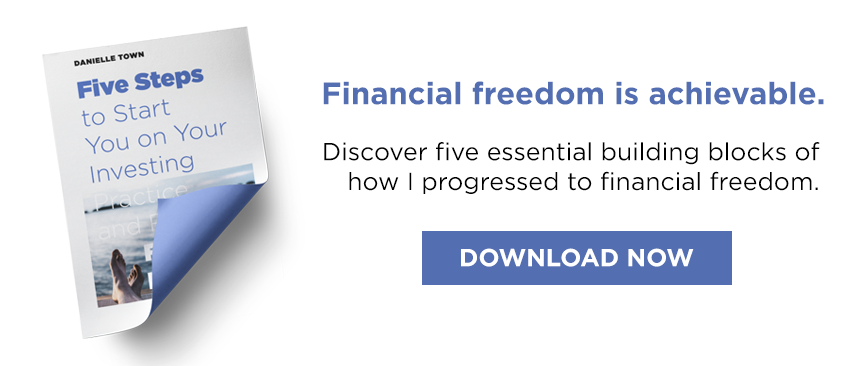Mar 27, 2018
How Warren Buffett and Charlie Munger Taught Me to Master My Mind, My Emotions, & My Money (with a Little Help From My Dad)
Excerpted from my book, Invested: How Warren Buffett and Charlie Munger Taught Me to Master My Mind, My Emotions, & My Money (with a Little Help From My Dad).
IF YOU’VE BEEN THE PERFECT PARENT, FEEL FREE TO CAST THE FIRST stone. Otherwise, have a little empathy when I tell you that this book came about because I failed to teach my own daughter how to do what I do for a living. You know the old stories about the cobbler’s kid who had no shoes or the farmer’s kid who had no milk? Well, this book is about, in part, the investor’s kid who had no investments.
Come on, now; it isn’t my fault. I’ve been trying to get my daughter, Danielle, to learn to invest since she was old enough to do the math—like, fourth grade—because I’ve been investing since 1980 and I’ve been teaching investing ever since I wrote my first book, Rule #1, in 2006. It’s simple: I want Danielle to be happy, and having enough money to do what she wants is part of happiness.
I knew I had to teach her myself because real investing isn’t taught as a viable strategy anywhere except in occasional books and classes, and by me. Diversify and hold is commonly thought of as investing, but that strategy is really just a cleverly disguised form of speculation that provides $100 billion a year in fees and commissions to Wall Street sharks and sycophant financial advisers. Buying stocks and bonds that you don’t understand isn’t investing. Warren Buffett says investing is buying an asset that produces cash flow for substantially less than it’s worth, like buying a ten-dollar bill for five dollars. In other words, real investing is about having a high degree of certainty that you’re going to make money because of the difference between what you paid and the cash flow value you bought; everything else is speculating.
I also wanted Danielle to learn to change a tire for equally obvious reasons. She didn’t want to learn to do either one.
That changed when she graduated with her fourth degree and got a job and a condo. Suddenly she was faced with taxes and student loans and mortgage payments and the shocking discovery that even as an attorney working in a good law firm and making really good money by anybody’s standards, accumulating wealth was hard. She finally did the math and discovered that unless she was willing to be a wage slave for her whole life, accumulating enough money to have choices was nearly impossible without investing.
She asked me what she should do. I gave her my two books to read. She read them, sort of, and told me those books were for people who were already interested in learning to invest. She didn’t want to learn to invest. She just wanted the problem to go away. And thus began her journey that is this book.
She thought about it for a few weeks and decided that if she could get interested in investing and actually learn it, anyone could. She suggested that we do a podcast of our conversations about investing, and she would be the guinea pig. I was pretty sure it was going to be a train wreck. Who wants to listen to a podcast about investing in which the mentor’s ideas get blown up on a regular basis by his very smart and skeptical daughter?
Well, surprisingly, lots of people. Our podcast has consistently been at the top of the business and investing charts, and we get e-mails from people who are listening to the recordings over and over.
Clearly, many people instinctively relate to Danielle’s classic heroine’s journey in which she pushed forward into an unfamiliar and topsy-turvy world where down was often up and allies might be enemies. As much as I wanted to, I couldn’t make her like investing; she had to find her own passion for it by “voting” for her values through investing as a conscious capitalist. Fear of making a mistake and losing money was a much bigger deal for her than I ever thought; because I have never felt much fear when it comes to investing, for the first time I took that fear personally. As a Vietnam War veteran, my perspective had always been, “Nobody’s shooting at me, so how scary can this be?” It took me a while to believe that fear was truly what was stopping her from investing. Once I understood that, it opened my eyes to the predicament of thousands of potential investors who are as desperate for a solution to managing their financial future as Danielle was. Danielle had to find her own way to face her fears, defeat the bad guys, and return with a message of hope and a plan for victory.
It is the right time for victory. This is not only the right time for the message of voting your values with your money, it is also the right time to stop being afraid of losing money by learning to prepare for a stock market crash. In spite of the rocketing stock market some economists and investors, including me, think the United States may soon enter into another recession and market decline. Unlike what most people think, this situation could actually create a great opportunity to buy wonderful companies at attractive prices. It is my mission to educate people on the realities of today’s market and how to acquire the skills to reap enormous financial rewards regardless of what the stock market is doing, what war is raging, what president is in office, or what the media and investing gurus say people should and should not do.
This book is our solution. The investor’s kid now has investments and is prepared for her future. I still need to teach her to change a tire.
When I hear “personal finance and investing,” in my mind I see a long, dark path of thick, swirling gray fog filled with numbers and balance sheets floating in the turmoil. Some lucky people seem to be able to easily find a path through that fog. Long ago, I stopped trying to learn to be one of them. I was never one for numbers. They swim in my mind and, though I can usually catch them and force them into submission, it’s never pleasant. And yet . . . this book is about my personal journey from financial illiteracy to becoming an educated investor. No one is more surprised than I am that I wrote a book about succeeding in personal finance and investing.
If I can do it, then truly, anyone can.
I learned how to invest on my own. I have learned what is called “Rule #1 Investing” from my father, and from the wisdom of Charlie Munger and Warren Buffett, who originally coined the phrase. I’ve learned the theory, strategy, and practice of investing. And to all that, I’ve added what might be the most crucial element to keep me sticking with it after the novelty wears off: investing my money so it will make an impact on a Mission I support.
Allocating your money according to your own values, and supporting companies worthy of your investment is reason enough to learn this practice and this method of investing. It’s a way to vote with your money for the future you want. I realized that if I wanted to vote my personal values with my personal money, I was going to have to overcome my inertia and my fear and do it myself.
A lot of this book is about fear: how I deal with it, and how other people investing in the stock market act on it. Voting for a Mission with my money made me feel passionate about investing, but I still felt afraid of stepping into that gray fog. Many economists and investors, including my dad, think the United States is imminently headed for another recession and market decline. But crucially, I’ve learned to use my own fear to identify when other investors are scared so I might capitalize on their fear in the markets. In these chapters, I will implore you not to overlook what fear can tell you— being cautious is not a bad thing. But, equally, I implore you not to overlook the power fear gives you.
For example, I experienced the panic around the market crash of 2008, and it made me terrified of investing. But I’ve learned that a market crash is a natural part of the economic cycle that is going to happen whether I want it to or not. Regular market declines are inevitable. I also learned that even though it may seem counterintuitive, a crash is our best chance to leapfrog into financial freedom by buying wonderful companies on sale at bargain-basement prices. It’s the investment equivalent of getting designer clothes for half of what they would have cost at the department store. These are the kinds of lessons that have given me power and understanding over my fear and allowed me to transform my life financially.
My dad and I have created an Investing Practice that anyone can do, no matter your age, income, job, or inherent math skills, which is set forth month by month. Each month of the year has a focus, along with detailed actions and exercises that support it. Most of the specific monthly tasks will take very little time, while others, such as the months practicing research, will take more diligence. Your time is limited and valuable, just like mine. This practice is meant to fit into the lives of all of us working full-time and struggling to manage everything that has to be done outside of work, and I know it’s a lot. This Investing Practice is designed to integrate into your life, not detract from it. Remember that this is your practice and you should adjust it to do what works for you.
This is my experience alone. What happened to me is unique to me and my circumstances, just as your Investing Practice and what happens to you will be unique to you and yours. Practice makes perfect—but nobody’s perfect. There is beauty in how our practices differ. Noticing and honoring what is easy for you and what is difficult will support your own Investing Practice much better than blindly following exactly what I did.
My experience gives you a barometer by which to gauge your own financial situation, along with the investing resources of the calculations, checklists, and worksheets provided in the appendix. Once you have your bearings, take your practice where you want it to go. Make the practice of investing your own, and you will have something that stays with you your entire life, a powerful skill that no one and nothing can take from you. I hope it compels you to think about your finances differently—not as a means to an end but instead as a source of happiness and freedom.
“Happiness doesn’t always feel happy,” Gretchen Rubin wrote in The Happiness Project about small goals like flossing daily or decluttering shelves. When it comes to something as life-changing as financial freedom, I think differently. My practice of investing has created the deep happiness that comes from my authentically making the life I want, and that happiness feels passionate, big, and free. May your Investing Practice be successful beyond your wildest dreams. That kind of happiness always feels happy.
Let’s begin.
Take command of your life and finances!
In this essential handbook—a blend of Rich Dad, Poor Dad and The Happiness Project—I share my yearlong journey learning to invest, as taught to me by my father, investor and bestselling author Phil Town.
